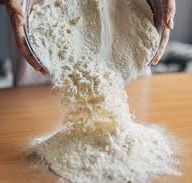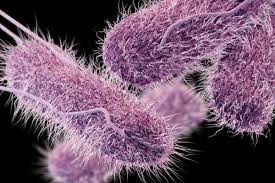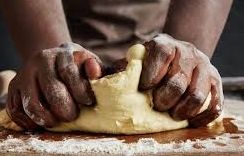
Flour-Related Salmonella Outbreak: Symptoms, Risks, and Safety Tips
A salmonella outbreak linked to flour has raised concerns about food safety, prompting health officials to issue warnings and recalls. Flour, a common kitchen staple, is often considered low-risk, but it can be contaminated with salmonella during production or processing. Since flour is typically consumed cooked (e.g., in baked goods), many people may not realize that handling raw flour or tasting uncooked dough or batter can pose serious health risks. Symptoms of salmonella infection include diarrhea, fever, stomach cramps, and vomiting, which can be severe for vulnerable populations like children, the elderly, and those with weakened immune systems. To stay safe, always avoid consuming raw flour products, wash hands and surfaces thoroughly after handling flour, and follow proper food safety guidelines. If you suspect contaminated flour, check for recalls and dispose of the product immediately.

Salmonella is a type of bacteria that can cause foodborne illness in humans. Symptoms of salmonella infection typically include diarrhea, fever, and abdominal cramps. In severe cases, the infection can be life-threatening, particularly for young children, older adults, and people with weakened immune systems.
Flour has been linked to several salmonella outbreaks in recent years. In 2016, an outbreak of salmonella infections in the United States was linked to contaminated flour, and in 2019, another outbreak was traced to flour produced by a specific company. To prevent the spread of salmonella, it is important to handle food safely, including washing hands and surfaces frequently, cooking food to the appropriate temperature, and avoiding cross-contamination between raw and cooked foods.
The Centers for Disease Control and Prevention (CDC) is a federal agency in the United States that is responsible for tracking and investigating outbreaks of foodborne illness, among other public health issues. If a salmonella outbreak is suspected, the CDC works with state and local health departments to identify the source of the contamination and take steps to prevent further infections.
In early 2023, a multistate outbreak of Salmonella infections in the United States was linked to the consumption of raw flour. The Centers for Disease Control and Prevention (CDC) reported that as of May 1, 2023, 13 individuals across 12 states had been infected with the outbreak strain of Salmonella Infantis, resulting in three hospitalizations. No deaths were reported.
According to CDC, Epidemiologic investigations revealed that most affected individuals had consumed raw dough or batter made with flour before falling ill. Flour was identified as the common ingredient among these cases.
In response, on April 28, 2023, specific batches of its Gold Medal Bleached and Unbleached All-Purpose Flour with “Better if Used By” dates of March 27, 2024, and March 28, 2024, were recalled.
This outbreak underscores the importance of handling flour safely, as it is a raw agricultural product that can be contaminated with harmful bacteria like Salmonella. The CDC advises against consuming raw dough or batter and recommends thoroughly cooking or baking foods made with flour to eliminate potential pathogens.
As of February 2025, there have been no further reports of outbreaks linked to flour.
How Does Flour Get Contaminated?

- Raw Wheat Exposure – Wheat can be exposed to Salmonella in the field through contaminated water, animal droppings, or soil.
- Processing Contamination – If flour mills or storage facilities have poor sanitation, bacteria can spread.
- Cross-Contamination – If flour comes into contact with contaminated surfaces, it can spread to other foods.
Symptoms of Salmonella Infection

- Diarrhea
- Fever
- Stomach cramps
- Vomiting (in severe cases)
- Dehydration (especially in vulnerable populations like children and the elderly)
Safety Tips
- Do not eat raw dough or batter – Bake or cook all flour-based products thoroughly before consuming them.
- Wash hands and surfaces – After handling flour, raw dough, or batter. Clean hands, countertops, utensils and mixing bowls thoroughly with soap and water to prevent cross-contamination.
- Store flour properly – Keep flour in an airtight container in a cool, dry place to prevent bacterial growth.
- Check for Recalls- Stay updated on product recalls and avoid using contaminated flour.
- Use Heat-Treated Flour for No-Bake Recipes –If making edible cookie dough or other raw-flour treats, use heat-treated or pasteurized flour.
- Keep Raw Flour Away from Ready-to-Eat Foods – Do not let flour come into contact with fresh produce, cooked foods, or eating surfaces.
Disclaimer: The information provided in this content is for general informational purposes only. It is not intended as medical or healthcare advice, diagnosis, or treatment. Always seek the advice of a qualified healthcare professional with any questions you may have regarding a medical condition or healthcare decisions.

